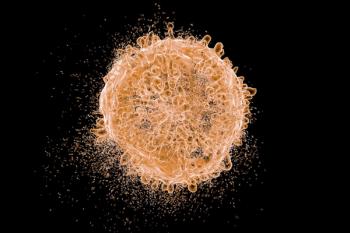
Oncology NEWS International
- Oncology NEWS International Vol 18 No 10
- Volume 18
- Issue 10
Low-risk tumors exhibit high proliferation index
Pathologists at the Yale University School of Medicine in New Haven, Conn., studied the relationship between the Oncotype Dx recurrence score and the cell cycle-related antigen Ki-67 in 32 breast carcinomas and evaluated for a potential association.
Pathologists at the Yale University School of Medicine in New Haven, Conn., studied the relationship between the Oncotype Dx recurrence score and the cell cycle-related antigen Ki-67 in 32 breast carcinomas and evaluated for a potential association.
Previous studies have shown that patients with a high-risk recurrence score will most likely benefit from adjuvant chemotherapy, but there is no proven advantage for patients with a low-risk recurrence score, who still face an average recurrence risk of 7%, according to the investigators (Int J Surg Pathol 174:303-310, 2009).
Comparison of the recurrence score with tumor type, grade, and the Ki-67 proliferation index (PI) revealed an overall concordance. However, some tumors with a low recurrence score revealed a surprisingly high Ki-67 PI. These cases may correspond to the 7% of low-risk carcinomas that recur, they wrote, and proposed that a combined evaluation of the recurrence score and Ki-67 PI be used to identify tumors with high recurrence potential from the low-risk and intermediate-risk groups.
Articles in this issue
about 16 years ago
Cancer, not HPV vaccination, hastened death of UK girlabout 16 years ago
Obesity hinders treatment in pediatric leukemiaabout 16 years ago
Posaconazole reduces infection in AML patientsabout 16 years ago
Global report warns of escalating cancer rateabout 16 years ago
New class of alpha emitters takes aim at bone metastasesabout 16 years ago
Who's Newsabout 16 years ago
Stop and smell the volatile organic compounds in lung caabout 16 years ago
Proton therapy report advises cautionNewsletter
Stay up to date on recent advances in the multidisciplinary approach to cancer.





